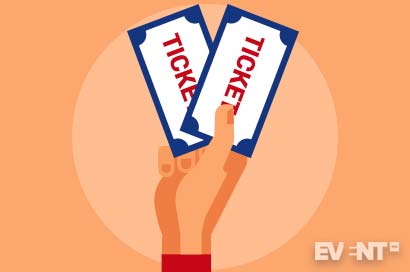Skift Take
Want to sell more event tickets?
Of course you do. Many of us can’t count on selling out at every event. We get that.
We also understand how difficult it can be to stay abreast of best practices and new strategies. There are a lot of things involved. Here are just a few of the questions you need to grapple with:
- How long should a registration form be?
- What kinds of questions should you ask, and at what stage of the process?
- Which tools offer the most comprehensive options?
- Do you absorb the transaction fees or add them to the ticket price?
- Where should you make your tickets available, and how do you reach the widest or most qualified crowd?
To help you sort through some of these questions and sell more tickets, we’ve studied and scouted some of the most successful events (and taken heed of what doesn’t work) to bring you a list of the best ways to sell tickets to your event.
In this article, our ticket selling tips are broken down into 6 sections:
- Event Ticket Selling Online
- How Data Reveals The Best Ways to Sell Tickets
- Tried and Tested Strategies
- Time and Value-based Incentives
- Pitching Your Event to Your Audience
- Back to Basics: Everything You Need to Sell Event Tickets
Event Ticket Selling Online
Unless your hosting a conference for an association of Luddites, your audience is likely going to discover your event online, and there are so many channels you can exploit to reach them.
Online sales are likely going to be the bulk of your revenue, so you want to make sure you are paying attention to the following.
Best Places to Sell Event Tickets
Landing Pages
There are many ways to use event landing pages to sell tickets. The advantage of using a landing page instead of referring interested people to your website is that a landing page offers a much more streamlined experience in an environment that is solely branded to your event.
Everything they need to know about the event is right there, paired with a clear call to action (CTA) and path for purchasing tickets. When interested parties are referred back to the general company website, you run the risk of the visitor getting lost or distracted by other information.
Whether your web designer builds it or you use a DIY platform, here are a few things to keep in mind:
- Keep it simple and to the point.
- Keep the event benefits and value props at the top so visitors get the idea quickly, without scrolling and without having to read a lot of text.
- Use a clear call to action that tells the landing page visitor exactly what you want them to do next
- If you embed a form directly on the page, use a simple form with essential contact information in mandatory fields at the top so that, if the registrant bails before completing the process, you’ll at least have collected enough information to follow up
Here’s an example from an upcoming EMB webinar landing page:
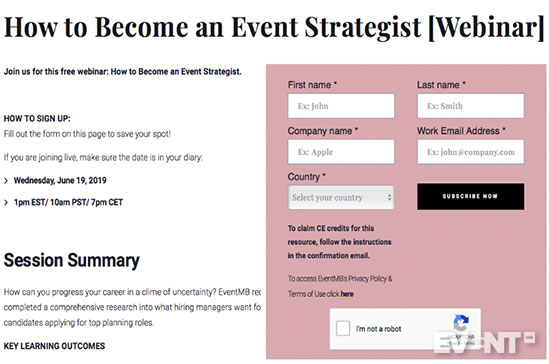
Web Page Widget
Some ticket selling software or registration software (and even some WordPress plug-ins) offers widget capabilities. A widget sits right on your website and looks like it’s part of your design, but it’s actually powered by the ticket selling software. It can normally be customized and branded to match your website.
Implementation will depend on the platform, but normally it involves some version of the following:
- Ask your software supplier or plug-in developer for the embed code.
- Pass said code to your web developer / designer with clear instructions about where it should appear and what it should look like.
- Always remember to test it to make sure it works.
- If it’s on your website through WordPress, you’ll want to ensure it still looks right with each new WordPress update (some roll-outs and updates may affect the embed code and functionality).
Social Media
You are doing yourself a great disservice if you don’t share your event ticket purchase information online in a way that interested prospective attendees can share within their network, too.
Social media is an essential component of the online event marketing for any public event or meeting that a large enough network can opt into, and facilitating ticket sales directly on the platform is a great way to reduce friction and barriers that might undermine your conversions.
Bonus Video:
Here are a few basic ways to get social media working for you:
- Post a graphically engaging flyer or event ad on social media with all the essential details.
- Add your event or create event pages wherever possible (e.g. a Facebook event as illustrated in the example below).
- If your platform allows for it, embed a widget directly onto Facebook and other event pages so people buying event tickets don’t even have to interrupt their social media session.
Check out this example from Facebook.
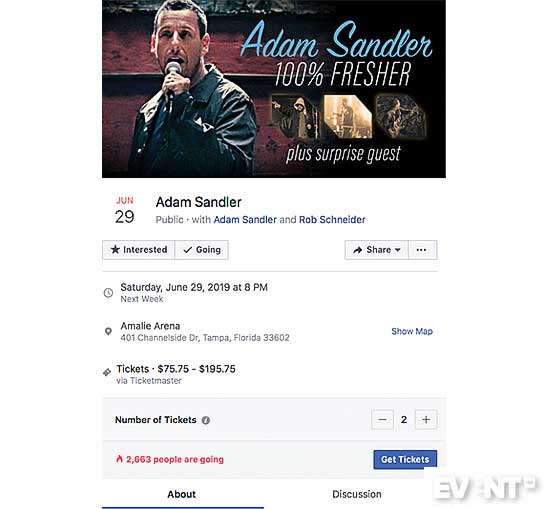
There are many benefits of Facebook events:
- Allow attendees to say whether they’re interested or going (it’s nice to differentiate between the two) and give their friends and peers another reason to opt in.
- Suggest people in your attendees’ Friends lists that they may want to invite.
- Embellish essential location information with a link to view it on an interactive map.
- Indicate the ticket prices and include a button you can use to purchase them.
- Add an indicator that this is a hot event in the area (e.g. with over 2,000 people going).
- Include an “About” tab that gives compelling additional details: the description of the event, who it’s featuring with links to their pages, the venue with a link to its page, more upcoming events at the same venue, and a gallery of pictures people took at the venue.
- Offer a “Discussion” tab where visitors can directly post about the event.
Live Chat
People often ask questions about something their registration hinges on. Forrester Research conducted a study called “Making Proactive Chat Work” in which it found that “Many online consumers want help from a live person while they are shopping online; in fact, 44% of online consumers say that having questions answered by a live person while in the middle of an online purchase is one of the most important features a Web site can offer.”
This translates to events as well. Sometimes simple questions hold up a ticket purchase. If they can’t get an answer, they won’t buy a ticket. Making yourself (or your team) accessible via live chat gives them a channel for immediate answers, minimizing the ‘missing information’ hump and allowing them to get on with registration.
Live chat also enables you to improve the registration experience in a number of ways:
- Help tech novices through the registration process before they get discouraged and leave the site.
- Improve personalized attention at a lower resource cost than a phone line.
- Provide real-time answers to multiple registrants’ questions simultaneously, avoiding the wait times that come with phone and email support.
- Help you navigate language barriers (accents may be hard to understand over the phone, and as a written form, chat negates that).
Here are some things you can do to create a good chat experience:
- Introduce yourself and convey a positive attitude. Always give your name as you welcome the site visitor in chat. Tell them you are happy they’re interested in the event. Not only is this nice, it allows you to field several chat messages at once, because they’ll be reading and responding. Just don’t make your intro too long.
- Get right into what they need. Some chats use a dropdown or mini form to better funnel the question to the right person or give you a quick heads up before the chat actually begins.
- Don’t rush them. Sometimes things come up while people are chatting. It’s fairly normal to have several chats going at once and a few of them in a lull. Just make sure your responses are prompt, and if you haven’t heard back in 4-5 minutes, drop a gentle reminder that you’re there whenever they get back, along with your chat operating hours.
- Provide clarification if needed and offer proactive advice. For instance, if they ask about a session on a specific topic suggest another at a different time that may also be of interest.
- Ask if there’s anything else. Always look for an opportunity to be of service. Close each chat session with an exciting detail about your event such as “Is there anything else I can help you with? <no.> Okay, hope to see you there. Remember early bird registration ends today. There’s a $500 savings good through the end of today. That’s a really nice discount.”
Ways to Boost Your Online Event Sales
Tickers
Another clever trick you can do to sell event tickets online is to add a ticker countdown or a ticker of recently registered people on your landing page or a website widget. Depending on the event, you can convey a sense of urgency by indicating that the event is selling out, or a sense of FOMO by indicating how many people have registered so far.
Both of these options draw interest in your event and play on the fear of missing out, which we’ll cover in more depth in the ticket selling strategies section.
How to make the most of your ticket ticker:
- Place it in a header or footer that follows users as they scroll up and down the landing page.
- Use a ticker that refreshes in real time so users can see it climb or drop.
- Consider changing the font color (e.g. to red) to convey a sense of urgency when tickets are running out.
- Add it to a pop-up as they navigate away from the page using a message like “Are you sure you want to leave? There are only 5 more tickets available at the discounted price.”
- Enable share buttons near the ticker so that potential registrants can make their friends and peers aware of the urgency required.
This example shows a countdown clock of time left to register:
Paid Advertising
Paid advertising in online newspapers, magazines, and industry blogs is an effective way of grabbing attention and generating interest.
Pay-per-view advertising allows you to control costs by setting a maximum daily budget. This involves tracking views or impressions of your ad and paying based on how many people have actually seen it. Once your daily budget for ad views has been reached, the ad will stop displaying. This way, you never go over budget.
One way of offsetting the costs of paid advertising is through sponsorship. Sponsors are keen to get their logo and message out. You just need to ensure you provide the demographic they’re looking to reach.
How to improve your paid advertising:
- Scout popular sites, industry publications, and influencers that appeal to your ideal demographic.
- Research and compare prices on available spots. If you’re paying for a banner ad, make sure you understand how often it will show.
- Design a highly visual ad that grabs attention. Don’t forget the CTA.
- Include a hook – since you pay every time someone stops on your ad or views it, you want to get people to take the next action as often as possible.
- If you’re placing it on social media, make it look like a post, not an advertisement.
- Ask about targeting. Does the platform give you the option to target certain groups for better return on investment (ROI)?
- Use partnerships to offset costs.
Pay Per Click Advertising
Pay-per-click (PPC) advertising works similarly to pay-per-view advertising, except that you pay for people who actually click on the ad rather than just people who look at it (or scroll past it in a feed). In this way, it can be more valuable, but how much it will cost depends on how much competition there is in your market segment.
PPC works with keywords, so you need to use good ones for your event. Of course, you’ll use the event name and any subset of that, the industry it appeals to (such as “best conference for sales professionals”), and anything else you think people would use to search for your event or something you can help with. There are books written on keyword strategy, so we won’t go into all the details here, but there are a few things to know.
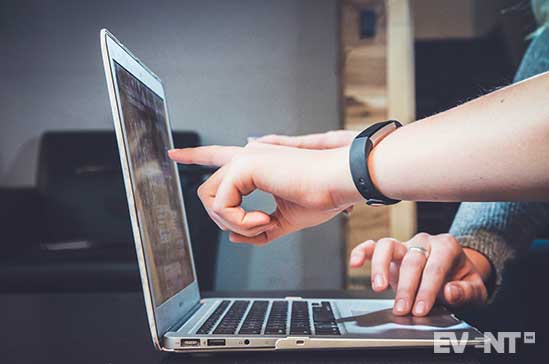
How to get better results with PPC:
- Choose good keywords that are relevant for your event or audience, and make sure the words are relevant to each other inside the ad group when creating your ad. For instance, if you were putting on a national camping convention, don’t try an ad using “tent vendors” and “leisure fishing,” even if your event audience would use either term to search for you. Instead, run an ad with tents and other things that fit with tents, like sleeping bags and mosquito screens, and a separate ad for “leisure fishing” and other relevant terms, like notable fishermen who might be speaking.
- If your event is small and the niche narrow, you needn’t use multiple PPC ads. In that case, concentrate everything into one. But if your event appeals to very different demographics, you should do several.
- Include a CTA. You want them to click and register. But since you’ll pay per click, make sure they know exactly why they’re clicking (and it shouldn’t be because they don’t know what you’re offering and are confused).
- Don’t forget long tail keywords. Long tail keywords are phrases people would use to find you in search. Optimize for your best performing of these as well, since the competition for ranking for these is generally lower (and the cost per click is correspondingly lower). You’re likely to get the best results from these because they’re easier to place for. A travel agent conference that tries to optimize for “travel” will have steep, expensive competition. But one that optimizes for “best travel agent conference” might not.
- Leave out negatives. There are some words closely related to your event that you might not offer. You don’t want people searching for these terms to find you, so set them to ‘negative’ in Google. You can also pause keywords that are not performing.
- Continually tweak the ad with relevant info that you’re learning from your ads. Don’t create one ad and leave it for the duration of your event (unless it is the best performing ad ever). Testing and adjusting over the course of your campaign is very normal.
Remarketing
If you’ve ever had a potential attendee come to your ticketshop or website and leave without purchasing a ticket, it might be time to employ remarketing.
There are many possible reasons as to why they didn’t convert (e.g. had to run into a meeting, lost service on the train, etc.) that might not have had anything to do with changing their mind, so it’s good practice to trigger a reminder and send out an online ad to entice the completion of a ticket purchase.
By collecting remarketing data, you can start to build out numerous audiences that you can retarget with online ads using Google AdWords. Here are a few tips on how to rock remarketing:
- Collect user info—especially contact info—early in the process so you have a way to follow up and recognize when they are returning. Many marketing automation tools can tell you when someone returned, what they did, and where they went if you get their user information. Otherwise they are logged as anonymous until they ‘reveal’ themselves.
- If your event or marketing technology allows for it, try to gauge the level of interest using information about where they dropped out of the funnel and how long they spent on certain pages. Some tools provide a heatmap of what pages users visited and where they gravitated toward on the page itself. You can easily see which buttons were the most clicked or other spots of interest to give you an idea of the typical user’s journey.
- Target users who have started the ticket purchasing journey but not yet converted to an actual ticket sale. A visitors who started the process tend to be low-hanging fruit, especially if you can figure out why they dropped out of the funnel.
- Build target user profiles for your remarketing campaigns based on what stage in the funnel different users dropped off and what communication, if any, they already received from you. For example, you might find a certain group of users are spending time on the ‘Line-up’ page of your festival website. If you determine that the bands involved are really important to their decision to buy a ticket, you can make an informed decision (like running a retargeting ad to them that announces line-up additions) to generate the best chance of re-engaging that user and generating a ticket sale.
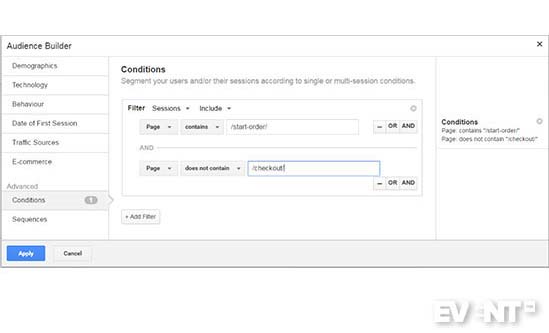
- Track your campaigns in Google Analytics and try A/B testing your follow-up messaging to see what performs better for any given target profile you’ve created.
- Make your ads visual to get more attention.
- Save money by not retargeting everyone. Retarget those in your ideal demographic and those who showed interest in purchasing a ticket. If you have a larger budget, expand that.
- Utilize remarketing to target more niche audiences with custom ads.
- Employ onsite remarketing too. If someone went to your “Buy Now” page and then went back to another spot on your site, remind them tickets are still available (or still in their cart). You can also use this tactic to remind people to get on a waitlist or early registration list.
How Data Reveals The Best Ways to Sell Tickets
Acquisition Reports
Acquisition reports in Google Analytics illustrate how users arrive to your site (or ticketshop). This provides you with insight into which channels your potential customers are using to enter your website. These might include search platforms, any paid advertising campaigns you’re running, social media, and email campaigns.
Acquisition reports can tell you which marketing channels have the most impact on your registration, which can help you make crucial decisions about which channels to invest in, double down on, or remove from your strategy.
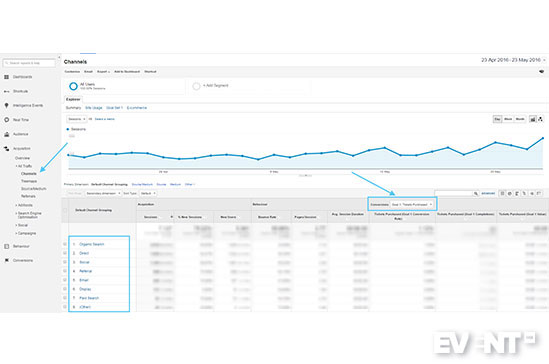
For example, say you’re putting on a music event and you’ve spent some percentage of your marketing budget with a particular online music magazine that seems to fit within your target audience. Comparing your ad spend with the amount of converting traffic it’s bringing in will tell you how expensive each qualified lead from that tactic is. If the ad generates less traffic per $1 than other channels, you know you should dedicate more to those.
These kind of questions create healthy debate for your business as you should always strive for maximum ROI when spending advertising budget.
Make your acquisition report more effective:
- Determine your marketing and advertising channels and keep detailed records of how much you’ve invested in each.
- Set up tracking through customized links, cookies, and other methods depending on the channel. If you’re not sure how, consult the support documentation for whatever platform you’re using or contact their support.
- Generate reports either through Google Analytics or, if the platform has the capability, directly on the platform.
- Track the traffic generated from each channel as well as the percentage of conversions to determine which channels are bringing in the most (and the most qualified) leads.
- Understand what each lead is costing you and how many leads you average before a ticket sale. This gives you an idea of how many people you need to reach in order to sell your ticket goal.
- Redistribute your marketing budget / investment according to what delivers the most ROI.
Behavior Reports
Once you have your potential customer on your website (or ticket shop), what are they doing? How are they interacting with your website and could there be improvements made to help increase conversion of ticket sales?
The behavior report can help with highlighting pages or elements on your website that are performing well or, more alarmingly, causing users to drop-off (bounce) before purchasing a ticket. This can help you identify if the ticket purchasing journey is too clunky. By utilizing this report, you can be confident in your decision to remove a page or redirect traffic to better performing pages.
Maybe you created an interesting video that is performing really well and generating a lot of engagement. You might try diverting your banner advertising links directly to this page, moving the video to the page you want people to go to, or putting a compelling CTA in the video directing people to the registration form. Make the most of your audience’s time and give them what they want without a lot of search on your site.
Acing your behavior reporting:
- Set up heatmaps or other tracking on the pages of your website. Monitor areas that receive a lot of engagement versus areas where people click away from pages or your site in general.
- Identify problematic areas and experiment with alterations to optimize the page performance. For instance, a heat map showed an event planner that a design was being mistaken for a button as people tried to click on it. By revamping it to a button, she used that prime real estate to sell more tickets as people were clicking there naturally anyway.
- If your traffic is high enough, consider A/B testing changes in colors, text, sizes, images, visuals, layout, calls to action, etc. in order to further optimize your page performance.
- Identify those pages and elements that are working well, and leverage them to drive traffic to the funnel and through the funnel towards a conversion. Your best performing areas should house your top content.
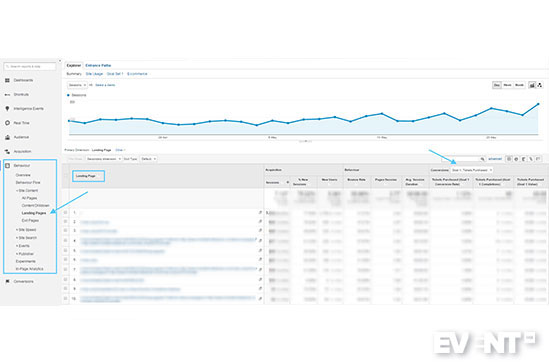
How to Sell Tickets for an Event with Tried and Tested Strategies
Online isn’t your only option when it comes to selling more tickets. Don’t forget traditional media as well.
Getting the Word Out
Press Releases
Your press release helps you reach a larger audience as it is circulated. You can do a press release online or submit a paper, faxed, or email copy to a distributor. There’s also your local newspaper or media outlet.
How to write a press release that gets read and circulated:
- Place your release date on the first line in all caps. Generally, you’ll use FOR IMMEDIATE RELEASE unless there’s some other reason to not release it for a while.
- Write an exceptional headline with a hook (using title case) that is less than 80 characters in length. Use keywords because if this gets disseminated online, you want Google to pay attention.
- Write a convincing subheading that’s less than 20 words. This should include reasons the ideal audience should attend. For instance, “Largest ticketed Reggae party in the south returns to Miami July 8, 2109.”
- Place the date and location of the event in the first paragraph. Also include the who, what, and why of attending.
- Customize the release to your ideal audience. Keep in mind their interests, needs, and habits when writing.
- Tell the human angle of why your event is important, critical to the community, industry, or other sector. Tell the story to get more traction and interest and they’ll be more apt to pick your idea up.
- Highlight value props + key differentiators, how should you choose which channels to disseminate it?
- Include quotes from the organizer, and the venue or keynote speaker. If you’re highlighting someone in the release, get a quote from them.
- Provide a CTA above the contact information in case a news outlet prints your release as is.
- Send it out before your event after all the details have been decided and registration is open.
- Include contact information and boilerplate info (which establishes your credibility) about your event outside of the body text. This allows someone to grab the information quickly.
- Distribute it to news outlets, reporters, bloggers, industry leaders, and other media outlets that fit your audience. You can also use a distribution service if you have a large audience. Fees for that run between $99 and around $300.
Leverage the Reach of Event Sponsors
Event sponsors have a reason to want to see you succeed. Make sure they have the necessary marketing materials to help you sell event tickets. Suggest they reach out to potential customers who may benefit from coming to your event. If you leave promotion up to them and just ask them to do it without giving them the tools, they won’t do it. Like you, they’re busy. Make it easy by providing them with the following:
- Marketing collaterals
- Event landing page URL
- Event website
- Event social media
- E-flyers
- Badges for their website
- Visual collaterals
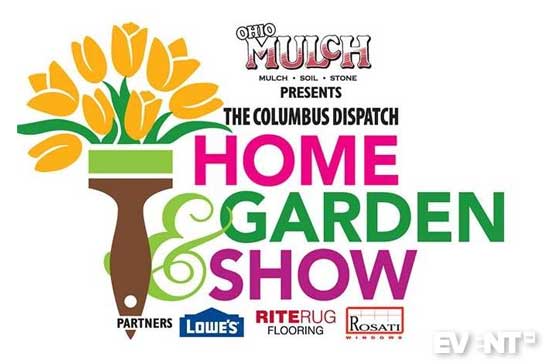
Use Referral Incentives and Word of Mouth
Turn Attendees into Reps
Why not incentivize your audience by providing the opportunity for individuals to become reps for your event? Sometimes the ability to pre-sell tickets is enough reward enough for them as they get to offer their tribe something no one else has. Other events choose to compensate them in some sort of commission form.
To do this:
- Provide the rep with a shortened, personalized link that they can then share across their social networks.
- Give them some special benefit that makes them seem “plugged in” to your event. Some event planners give reps a special discount code to use or a ‘buy one, get one’ discount. Others offer special VIP benefits, like access to sessions that are not available to the public, such as a keynote meet and greet. Offering something they can’t get elsewhere gives people a reason to buy a ticket from one source instead of another, especially if it offers a sense of exclusivity at the event.
- Next give your rep a personal reason to share it. An incentive could be a free ticket if they sell five tickets through their social network or even an exclusive experiential reward such as backstage access for them at your event.
- When the new ticket buyer uses the specific link to purchase a ticket, the rep will be recognized as successfully selling a ticket and you can reward your “seller” or brand ambassadors.
Don’t forget your speakers and entertainers. Provide them with something like this so you can leverage their audience as well:
A Broadway singer at #SMMW19?! Yes, that’s right! We’re thrilled to have @evynnehollens here with us at the closing keynote this afternoon for a performance you won’t want to miss! pic.twitter.com/jBNhHJeH34
— Social Media Marketing World #SMMW19 (@SMMWConference) March 22, 2019
Cross-promote Other Events
If there’s an event in your community that’s similar to your own but not a direct competitor, you can approach the other planner to talk of cross-promotion opportunities. Sometimes event planners have complementary events that they’re planning and they’ll cross-pollinate the lists to reach a slightly different group.
Think about other partnerships that give you access to a different base as well. Approach other industry organizations whose members may benefit from your event, especially if that organization doesn’t have their own conferences or events. Speak to them about how you may arrange a mutually beneficial situation.
Sell Event Tickets With Time and Value-based Incentives
Ticket Selling Strategies and Tactics
When trying to increase ticket sales, in addition to reaching the audience, you can employ a little psychology to create a perceived need to take action and make a purchase.
Group and Returning Attendee Discounts
People are more likely to attend an event when they know another attendee. Offering group discounts for five or more tickets can help you sell more tickets.
- Determine the appropriate size of a group discount. If your event is an easy sell with a well articulated value prop and you’re in demand, offer discounts on large groups. If your event if a tougher sell that’s more niche, and you want to expand your reach, aim for lower groups of 3-4.
- Consider offering a sliding discount that increases by specific intervals up to a certain number of members. Bring a friend? 5% off. Bring a third? 10% 4-person posse? 15%
- Make sure to check that your registration system or EMS can support this level of discount customization. If you run into limitations, try packages with the discounts built-in, or contact your registration system’s support team for workaround ideas.
While we’re talking about groups, you may want to consider offering either presale tickets to last year’s attendees or some other special offer, like a returning attendees’ VIP session. It makes them feel like they’re being rewarded for their loyalty.
- For this strategy to be the most effective, make sure you invite them with a personalized message/email. A broadcast announcement won’t make them feel nearly as appreciated.
- While you might not want to offend first-time registrants, mentioning the loyalty session or perk in your marketing can give people another reason to register this year if they’re on the fence.
This example gives a 50% discount if your register now for next year’s event as well.
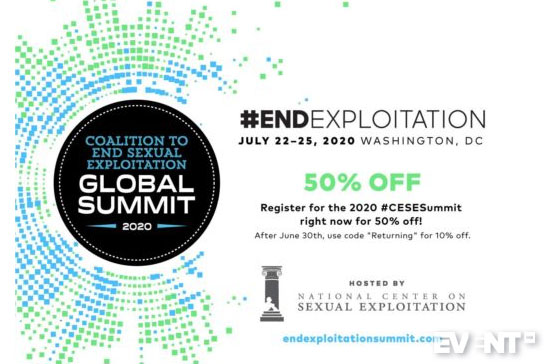
‘What’s In It For Them’ Visuals
Creating the right content to get attention is an important strategy to increase event ticket sales. You want to be clear about what’s in it for the future attendee, not why you want to sell tickets. There is an abundance of content on social media, so the only way to cut through is by providing something that is actually worth sharing in a visually eye-catching way.
Here are some tips on how to convey the right message:
- Focus on the value proposition and, word count permitting, the tension between the challenge you’re event helps attendees overcome and the positive value they’ll derive from it. For example, “Event Automations: Combat workflow inefficiency and propel your productivity and your events into the future.”The implied challenge here is that event tech can be daunting and there’s a lot of legacy SOPs in place, and the positive value you get beyond remedying that situation in your organization is that it will enable you to produce modern events more easily.
- Whenever possible, include stats about last-year’s attendee experience, including reviews, star-ratings, connections made, and more. Numbers are impactful but don’t take up a lot of copy space.
- During your event, invest in professional photography that provides you with a gallery of images you can test on your audience.
- Use analytics to determine which images gain the most interaction with your audience so you can focus on turning these interactions into ticket sales. If you can do your part in providing unique, interesting content, you can sit back (a little) and let your attendees spread the word.
- Nostalgia can be used to create an organic reaction in your audience to share content with their friends and followers. After-event videos are a great way to achieve this, as they instantly strike a chord with the attendee who desperately wishes they were back in their happy place: your event! When attendees remember the fun they had, they’ll want to let their friends know what they missed out on!
Scarcity and the Fear of Missing Out
People are afraid of scarcity, of missed opportunities. Convincing people that the supply is time-limited or is not equal to the demand is a great way to move them to take the action to buy.
This fear of missing out (FoMo, as it’s commonly referred to) leads people to do crazy things, like stand in line for days before a new store opens or a new technology goes on sale.
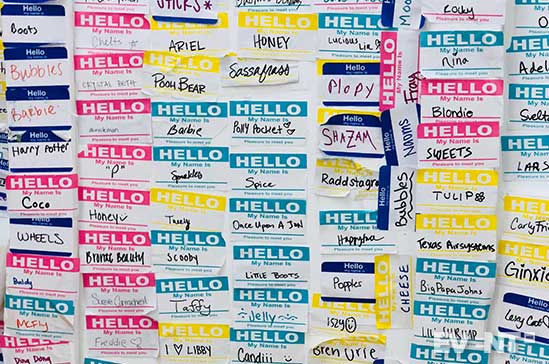
Here are a few things you can do to give people a motivating sense of FoMo:
- Tickers, as discussed above.
- Teasers and trailers (especially if the event has limited seating / ticketing), like this example from Gingerline, an immersive dining event which is hugely popular in London. Tickets never last long once they announce new dates. This video really teases the potential attendee with what they’re missing out on.
- Limited time only prices, making the event accessible to those who might otherwise struggle with the financial barrier. (More on this option later.)
Velvet Rope
Familiarize yourself with the term “velvet rope.” The idea, which originated in nightclubs, is to allow non-VIPs to see enough of what is going on in the VIP area that they want to be a part of it and pay for access.
Here are a few ways to exploit the velvet rope to encourage more ticket sales and upsells:
- Structure your ticket tiers with these things in mind, and name them in a way that conveys value and exclusivity. The ‘Platinum Package’ could be the standard event package with exclusive access to a CEO-level cocktail hour or a closed, private function with all the speakers invited.
- Limiting content access is another way to create a velvet rope and entice attendees to upgrade to a higher tier. You could give virtual attendee tickets away, but charge for copies of the content or provide only some of the sessions in a given track for free.
- If you have multiple tracks you could provide one track option for free, or allow a free, basic tier of content access that provides recorded versions of up to 3 sessions to peak their interest.
VIP Early Access or Pre-Sale
If you have an email list (or want to create one), consider placing a call out to those who want to be notified of pre-sale ticket opportunities. Encouraging early registration will help you to get a better early projection of the event attendance and popularity, too.
American Express, Citi, and CapitalOne credit cards offer this as a perk for card holders. Card holders can get presale tickets to a number of concerts throughout the year before the public can purchase them. Amex also offers special invitation only experiences for VIP tickets to Wimbledon and other exclusive opportunities.
Take a look at what Phish did in order to line up early sales in this evite.
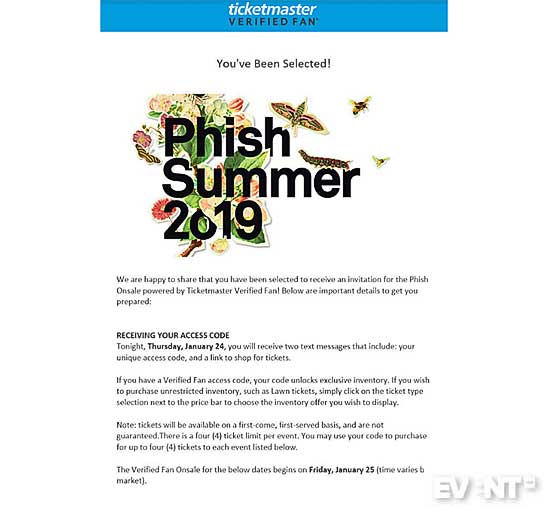
Here are some things for you to try if presale tickets are possible for your event:
- Work with organizations to offer the same exclusivity on your event if it’s well-known.
- If you host many events, build your own VIP list by creating a membership option on your website. This is a good way to create a list of warm leads.
- Offer VIP perks to people who sign up through one of the presale channels.
- As with any marketing effort, track your presale tickets and measure the percentage of your contacts who convert. These should be warmer leads than other sources.
- If you find that there’s no marked increase in the conversion rate at this stage despite significant membership numbers, try filtering the membership for level of interest by instituting an application process that will help you cater your communication to a smaller set of more interested ‘insiders’.
- Keep the membership engaged with regular content, which you can also use to generate more members. Just remember to make the content targeted and valuable.
- [emb_squared_subtitle number="20" text_color="" box_color="" box_background_color="#fca76d"] Early-Bird Discounts[/emb_squared_subtitle]
Early-Bird Discounts
Another way to drive early ticket sales is to offer early bookers a special time-limited discount. This is less suitable for events that normally sell out, but if yours could benefit from some early momentum, this is a great way to kick things off.
Social Boom Conference created an early, early bird for its attendees by offering a steep discount before they finished the event website. Once the event website design was completed and launched, the discount would disappear.
The FoMo mechanism was triggered thanks to ambiguity about when the site would be complete. No one knew when the site would launch, so if they wanted the discount, they had to act quickly.
The steps for activating an early-bird discount are pretty straightforward:
- Set up a timeline for your event marketing and establish goals for the early-bird period. If your event usually sells out, this might
- Set up your tracking process, whether it’s through your registration system or website or whatever.
- Determine your early bird discounts or incentives.
- Market them along all relevant channels, including your social media accounts and through posts on related or industry accounts.
- Leverage your early birds by creating a mailing list through which you can deliver news, downloadables, early networking opportunities, or sharable promos that help them spread the gospel of your event.
- [emb_squared_subtitle number="21" text_color="" box_color="" box_background_color="#fca76d"] Last-Minute ‘Buy One, Get One’ (BOGO)[/emb_squared_subtitle]
Last-Minute ‘Buy One, Get One’ (BOGO)
Some event planners are hesitant to offer discounts as they feel it devalues their event. However, a BOGO offer is a way to get more people to the event in the hopes of bringing them back next year. If you have additional merchandising available or extra experiences for additional fees, you can still make money on the free (get one) ticket.
This is a good tactic to use when your attendee numbers are lower than you hoped. It also may be just what you need to swing a few last-minute decisions. When attendees are able to bring a friend, they’ll feel more comfortable. It also may make the trip more affordable for them to have someone to share the costs with.
There are a few things to keep in mind, however:
- If your goal is to swell your numbers and extend your reach for next year, don’t forget to collect a separate set of contact information for the ‘free’ attendee as well.
- Consider the potential discontent from registrants who would also like to bring a +1 but registered in advance. One way you can plan for this in advance is to attach incentives to other stages of the registration, too, to balance things out. Otherwise, you could grant the ‘free’ ticket attendee restricted access.
- Similarly, remember to set a transparent policy regarding refunds and purchases so people don’t return the tickets they already purchase and purchase again with the new BOGO arrangement in place.
Limited ‘Fire’ Sale
Nothing gets social media communities excited quite like a limited time sale. It will boost your ticket sales during that period, but the impulse to share the deal within your audience’s network will have residual benefits as well, thanks to the spread of awareness.
How to host a successful fire sale:
- Use Twitter as a platform to announce a 1-hour only sale where a limited number of tickets will be available at a heavily discounted price.
- Provide a hashtag for the attendee to repost and get friends and followers on board.
- Encourage your followers to share this exclusive offering with their followers through retweets and tagging.
- Make the announcement official, post your hidden URL ticket link, and watch the sales.
- Create the ‘fire’ sale around a particular event or holiday so as to not devalue your event (e.g “Exclusive Christmas Sale”).
- Keep the tickets limited so you don’t damage your bottom line and think about the marketing budget you just saved by opting for a simple (and FREE) tweet over a traditional (potentially expensive) marketing campaign.
Activity Bonuses
Activity bonuses drive ticket sales by offering registrants an additional incentive to purchase. The activity could be as simple as a complimentary dinner or as involved as access to a day trip. Plus, if you have tickets you’re selling for an additional experience that isn’t quite selling the way you thought, you can use that as a way to fill the sub event.
- Use this strategy early in the sales cycle as an alternative to an early-bird discount.
- Alternatively, reserve it for later when you need to make final counts.
- Note that, if you use this technique at the end of the ticket sales window, you will be conditioning your audience to wait until right before the event to buy tickets next year.
- Experiment with scarcity and FoMo to avoid that conditioning, so that prospective registrants worry that you will sell out before you have to offer the same discount next year.
Pitching Your Event to Your Audience
Storytelling
When it comes to event marketing and event ticket sales, a story can be as simple as a photograph with a caption. Because of limited attention spans you need to get your story out as simply and effectively as possible.
- Looking at the table below, start creating little stories about the various elements of your event.
- Think about how you would visualize these stories, and how those visuals could be used to draw on people’s emotions.
- Stories about people resonate. People connect with other people, so make sure you focus your story on real-life.
- Use your story to reinforce a strong identity for your event.
- Consider how your audience is going to relate to the story, and use familiar character archetypes to help them connect with it. Position them as the hero of the story, and yourself as a supporting character that helps them meet a challenge in their lives.
- [emb_squared_subtitle number="25" text_color="" box_color="" box_background_color="#4264b0"] Showcase the Host City[/emb_squared_subtitle]
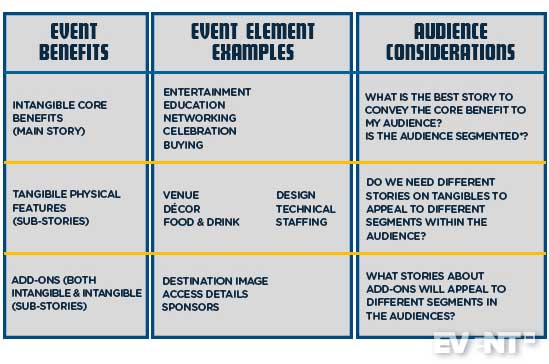
Showcase the Host City
Where the event is held is often a big draw for ticket purchasers. That’s why some event planners showcase the host city or venue as closely as the keynote speaker or headliner.
Notice in this example, instead of a drop-down or list of venues and host cities, they create an appealing way to call attention to the options.
Here are some tips for conveying all that your city has to offer:
- Local sites of interest are a huge draw, and you should highlight them. Take it a step further by reaching out to see if you can partner with the organizations administering them, and look into offering your guests a unique experience.
- Incorporate local cuisine into your event, and highlight great places to eat at a range of budgets in your marketing materials.
- Talk about transportation. People want to know how easy it is to get around, and not just from the airport to the venue.
- If yours is a historical city, add context for prospective event-goers so they can appreciate the significance of the city. It may just end up on a bucket list or two.
Sell More Tickets Online with Earned Content
Earned content refers to the content, blog posts, and social media created by other people. It is highly valuable, as no amount of paid advertising can beat an endorsement from an impartial party on their social media profile or blog.
You want other people talking about your event as much as possible. How you get that kind of attention is by providing value. You can do this several ways:
- Create valuable ‘owned’ content that other people want to share.
- Add value to a relationship by giving them what they need, becoming a resource.
- Seek out earned content by nurturing relationships with your event allies. These are the people who either already have an interest in your event or industry leaders who are active on social media. Your allies include your attendees, volunteers, sponsors, exhibitors, speakers and subject matter experts. For the most part these people have a vested interest in your success.
- Make it as easy as possible for those allies and event ambassadors to share about the event and how to purchase tickets.
- Nurture and support these relationships. Call your top sponsors and exhibitors and ask them how you can make it easy for them to get the word out. Provide them with a social media kit, weekly tweets and other content that they can easily share. Where appropriate request that they send an email blast to their network. Make requests that your allies ‘like’ your posts and share your content.
Your attendees are your champions. There have been lots of articles written on how to get your attendees tweeting before, during and after your event, and there are lots of tools to help you do that.
See, for example, Kelvin Newman’s post on Power user Methods for Twitter.
Don’t forget about your volunteers, they may be your secret marketing weapon. The chances are you have a few social media gurus hidden in your team. Scout them out or recruit them to sell more event tickets.
Everything You Need to Sell Event Tickets
While the psychological strategies and sales incentives are important, we would be remiss if we didn’t mention the basic pieces of the puzzle:
Website
An event website should inspire trust. It’s a good idea to include your top speakers on your homepage, as well as previous participants, real testimonials from real people, celebrity endorsements, press mentions, pictures of the previous event, etc.
Always keep your website up-to-date. Never leave outdated information published on the site; it sends the wrong signal to potential participants. Pay special attention to prices and offers. Always keep your visitors in the loop by embedding a Twitter/Facebook feed or by keeping an active blog.
Follow the basic rules of quality web content:
- Start with your conclusion. What’s the purpose?
- Use headings to make the content more skimmable.
- Be brief – never use long words, sentences, and paragraphs.
- Use bullets and numbers.
- Include summaries/overviews so your audience knows what to expect.
- Bold and highlight important information.
- Respect privacy and copyrights.
- Avoid website distractions: banners selling something else, newsletter subscriptions, autoplaying videos, etc. You want people to register for the event. Everything on the website that doesn’t serve this purpose is secondary and therefore unimportant.
Bonus Tip
If this is an annual event, the moment one event ends you should begin selling the next. Check out this page that Social Media Marketing World keeps updated.
Registration Platform/EMS
One of the most efficient ways to sell tickets is through a registration platform or an event management system (EMS). The primary benefit of doing so is a more seamless workflow around selling, tracking, and analyzing as the ticketing platform and other tools can usually be integrated (if they’re not already built into each other in one platform).
Some EMS’s also have content management systems that allow for quick changes to websites and forms. Some also offer templates for landing pages and a ‘what you see is what you get’ editing functionality that allows you to easily change and personalize the site without coding or a design background.
Things to look for in an EMS or registration platform:
- Engagement tools: these can help you stay top of mind with previous attendees to help you sell more tickets in the future.
- Reporting and analytics: can help you better understand your audience to ensure a more personalized experience and higher conversions.
- Event marketing tools: again, staying in contact with your audience can equate to more sales.
- Good ticketing platform: this tool should be customizable to your needs allowing you to gather the information you want without asking your audience for too much. A streamlined process means less friction buying and more people completing the process.
Call to Action
A call to action (CTA) is a prompt, typically on a webpage, for the site visitor to do something. It’s meant to provoke an immediate response, which can be anything from buying a ticket on the spot or moving into the next step of the marketing funnel, depending on the stage of your event marketing the visitor encounters.
Here are some things to keep in mind when designing a CTA that works:
- Usually a CTA uses an imperative verb, such as “Register Now.”
- Give the user a reason to click by creating a context for your CTA that properly communicates the benefits of the action.
- Create a sense of urgency using impactful, non-passive button language.
- Make the user feel safe in taking the next action by using button language that indicates what they can expect if they follow the CTA.
- Don’t stick your CTA at the bottom of the page. Pepper it in throughout as buttons, URLs, and other formats to ensure you sell the most tickets and no one misses it.
- Your CTA’s are some of the most impactful elements of your website, and you should A/B test them to make sure you’re making the most of the opportunities.
Pricing
You should always start off with the average price at which you would like to sell your tickets and build all ticket categories, special offers, and discounts based on that price. So if your average price is $200, you should price all your tickets from $150 to 400 EUR. This will allow you to include additional discounts and special offers.
Follow these four pricing tactics to stimulate sales.
- Offer at least 2 ticket categories (for example Standard and VIP).
- Always offer at least 3 time/quantity restricted tickets (for example – Super Early Bird, Early Bird, Standard).
- Include public special offers like 3 for 2, a discount for orders over $1000, group discounts for over 5 people etc. Special offers can be combined with ticket categories to make them more attractive.
- Try code discounts as a great way to offer “hidden” discounts, not available to the public. They should be limited in time/quantity. If they are “always valid” people will not feel the urge to use them.
Some planners believe you should never offer a lower price closer to the event than you did when they first went on sale. Although this is fine in some businesses (like the airline and hospitality businesses), it is extremely unpopular in the events industry.
People that have bought a ticket three months before the event may be upset if they find out they can buy a cheaper ticket one week before the event. This is why “last-minute” offers should be used only when necessary and should contain some reason or differentiator/detractor, such as not receiving keynote session entry. Note our previous comment in the section on activity bonuses and conditioning people to wait for a deep discount.
Registration Form and Checkout / Ticket Selling Software
Many people drop out during registration. The registration form is the place where you can lose all impulse buyers, so it is essential that you do not underestimate the importance of your registration form in your ticket selling software.
- Make your registration form as easy as possible. Add descriptions to all fields that may be unclear.
- Keep it short. Don’t ask for information you do not essentially need.
- Use dynamic form logic to ask registrants pertinent questions based on previous responses. This can also be used to cut questions that are not relevant to them from the process.
- Whenever possible, don’t ask for an account registration. Although the difference in the process may only be an additional password field, users are more likely to complete registration forms that don’t require creating a new account.
- Language, currency and payment method localization can boost registration by up to 300% depending on the market and the event. Always adapt your language, currency, and payment methods to the market and your target audience.
- Fully brand your form, especially if it’s on its own landing page. This will help to ensure a seamless experience and foster trust in the form.
Bonus tip
When auditioning ticket selling software, make sure to pay close attention to capabilities within the form. How much can your personalize and design to create the form you want and how much is a template that may make the process clunkier than it should be.
IN CONCLUSION
The best ways to sell event tickets combine simple tactics to increase your audience reach (mainly by isolating the best place to sell tickets online), use proven ticket selling strategies and ensure you’re employing the basic components of a good ticket sales campaign.
Using the right sales techniques to sell event tickets will help you convert those numbers reached in your marketing to tickets. Ensuring that you implement effective pieces of a good event marketing campaign will help you build more meaningful relationships and sell more event tickets in the future.
